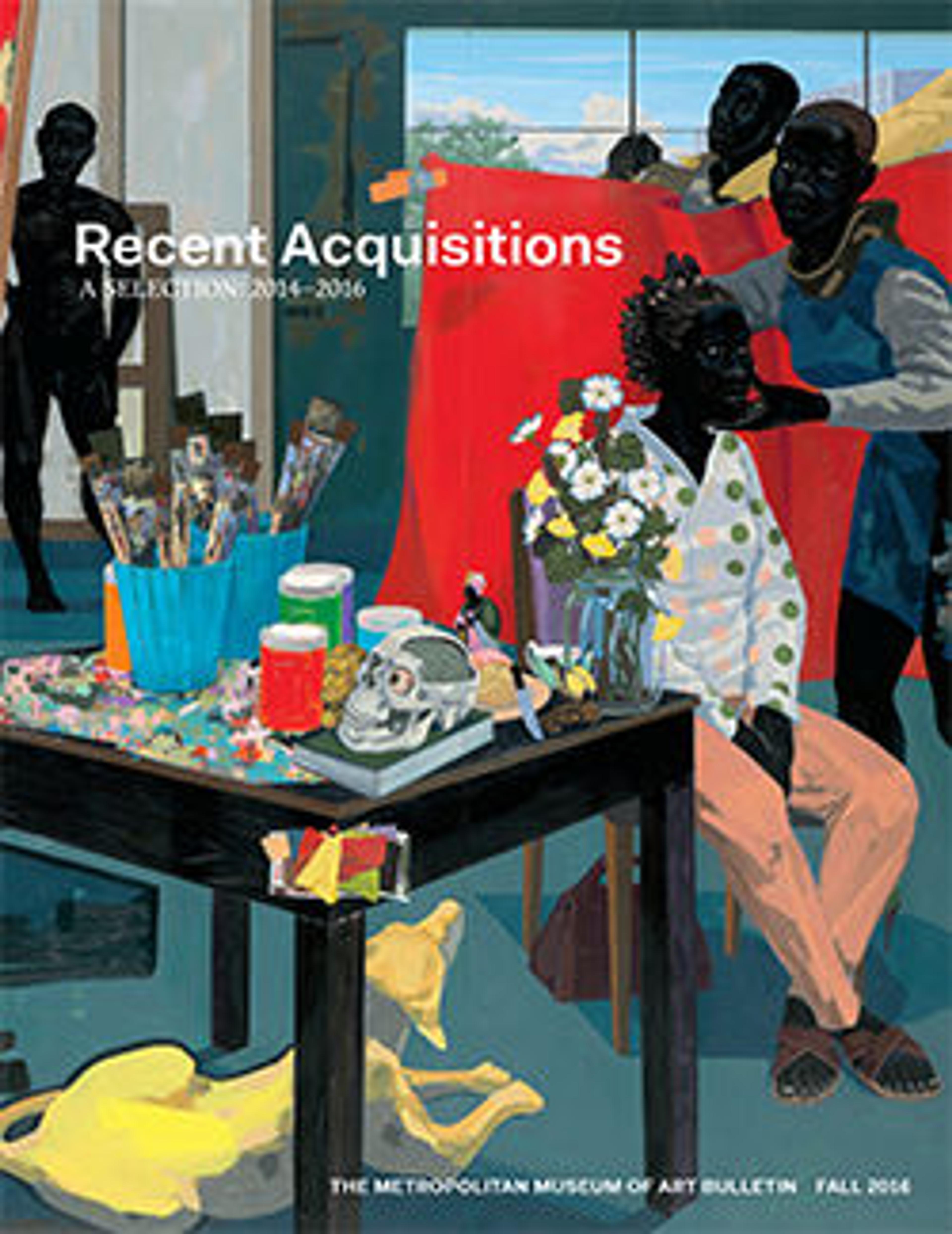Bedding Bag
Shahsevan bedding bags, previously misidentified as children’s cradles, represent the durable, lightweight nomadic equivalent of a steamer trunk, intended for blankets, quilts, and other bedding.
These boxlike bags are composed of four decorated panels, usually with sumak extra-weft wrapping and a weft-faced plain-weave bottom. The field design seen here features a central band of connected white hexagons alternating with blue half hexagons. The red cruciform motif on the white cotton ground in the hexagons contributes to the bag’s striking appearance. Yellow guard stripes with stylized tendrils separate the main band from the upper and lower secondary bands of stylized clouds in the form of an octagonal cross.
These boxlike bags are composed of four decorated panels, usually with sumak extra-weft wrapping and a weft-faced plain-weave bottom. The field design seen here features a central band of connected white hexagons alternating with blue half hexagons. The red cruciform motif on the white cotton ground in the hexagons contributes to the bag’s striking appearance. Yellow guard stripes with stylized tendrils separate the main band from the upper and lower secondary bands of stylized clouds in the form of an octagonal cross.
Artwork Details
- Title: Bedding Bag
- Date: ca. 1825–75
- Geography: From Northwestern Iran or Azerbaijan, Shahsevan tribe
- Medium: Wool (warp, ground weft, and sumak weft), cotton (white sumak weft), and goat(?) hair (loops); sumak extra-weft wrapping (sides); weft-faced plain weave (bottom and sides)
- Dimensions: H. 20 in. (50.8 cm)
W. 41 in. (104.1 cm)
D. 19 in. (48.3 cm) - Classification: Textiles-Woven-Brocade
- Credit Line: Gift of Inger G. and William B. Ginsberg, 2015
- Object Number: 2015.490.23
- Curatorial Department: Islamic Art
More Artwork
Research Resources
The Met provides unparalleled resources for research and welcomes an international community of students and scholars. The Met's Open Access API is where creators and researchers can connect to the The Met collection. Open Access data and public domain images are available for unrestricted commercial and noncommercial use without permission or fee.
To request images under copyright and other restrictions, please use this Image Request form.
Feedback
We continue to research and examine historical and cultural context for objects in The Met collection. If you have comments or questions about this object record, please contact us using the form below. The Museum looks forward to receiving your comments.
